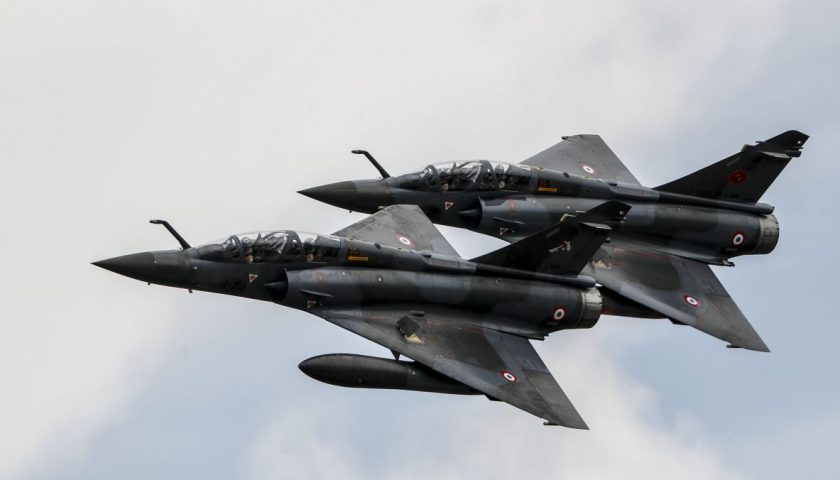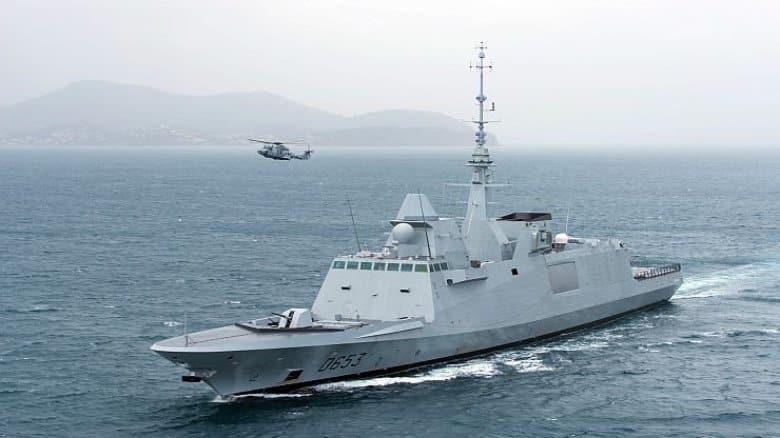When he took office, the new Chief of Staff of the Army, General Burkhard, declared that high-intensity combat had now become a probable hypothesis, and that it was therefore necessary to pursue it. prepare. Finally, some will say... From the postulate made, we can only note that the formats and means available to the French armies are very poorly suited to this type of engagement. Worse, the LPM2019-2025, although presented as the solution to all the problems of the national armed forces, provides very little response. And this is quite normal, because the current LPM, like the 2017 Strategic Review which served as its framework, are both based on a founding document, the White Paper on Security and National Defense of 2013, a document which Today, it is no longer in tune with the geostrategic and operational realities of the world.
It must be said that LBSDN2013 was born in a very special moment. Its drafting was in fact begun following the victory of President Hollande in the 2012 elections, and was still very steeped in the paradigms resulting from the period of massive deflation in numbers and resources of the Sarkozy five-year term. Furthermore, it took shape while France, and Europe, was in the midst of an economic crisis resulting from state debt, and the key word then was “economy”. Defense appeared at that time as a tool divided into two parts:
- The deterrent forces which represented the country's life insurance in the face of an irrational act of a third nation
- Conventional forces, organized in the form of an expeditionary force, which were to ensure France's power projection in coalition for the maintenance of international order.
Thanks to the involvement of the Minister of Defense JY Le Drian and the Chiefs of Staff at the time, the LBDSN2013 narrowly avoided falling into the “Z” plan proposed by Bercy, which provided for a reduced format of the armies at 150.000 men, for an expeditionary force of 50.000 men, special forces, and air and naval assets adapted to low and medium intensity theaters, without notion of strategic autonomy. Despite everything, the LBDSN 2013 was built on a very limited format, of only 200.000 men, including a land operational force reduced to 70.000 men, a naval force limited to 1 aircraft carrier and 15 frigates, and an air force with only 185 hunters. In addition, heavy assets, such as battle tanks, heavy artillery systems, destroyers, and combat aircraft, were limited to their strictest minimum to maintain hard-earned know-how, and to be able to where appropriate, to participate in coalitions.

However, reality did not take long to bring the country back to the harsh realities of the world in which we operate. The ink on the White Paper had not yet dried when the Ukrainian crisis began, with the Russian annexation of Crimea and the start of the conflict in Donbass. At the same time, France intervened militarily in Mali and Central Africa. A year later, there were the Paris attacks, the Russian intervention in Syria, and the start of Chinese control of the China Sea. In a few years, it became evident that Russia, China, Turkey, but also India, Pakistan, and the United States, had entered a new era of international tensions, with the reappearance of the specter of conflicts between states.
However, the LBDSN2013, although built on the basis of postulates which it was now obvious that they no longer applied, was not called into question. And the political decisions of the time focused around a moratorium on staff deflation, and the launch of a few symbolic programs, always aiming at the same objective of coalition action, and low to medium intensity commitments. .
During the 2017 presidential campaign, Defense was one of the campaign themes, and most of the candidates included in their program the desire to bring the Defense budget to 2% of GDP, a threshold whose relevance is very questionable. but which has been presented for several years as the Alpha and Omega of national security. Following his election, President Macron ordered the drafting of a Strategic Review which would serve as a framework for the drafting of the 2019-2025 Military Programming Law. But this strategic review was limited by 2 strict paradigms imposed by the executive:
- Respect of the army budget limit of 2% of GDP at the end of the LPM
- Compliance with the format defined by the LBDSN2013
Obviously, in this context, the interest of a Strategic Review was very limited, since the strategic conclusion was written before it was even drafted. And in fact, the resulting LPM suffered from the same stigma as previous programming laws. It was certainly designed with a view to recapitalizing the armed forces' resources, with the announced increase in the armed forces' budget of €1,7 billion per year until 2023, but these resources were concentrated on means adapted to low-intensity engagements, like those in which France participates in the South-Saharan zone or in the Levant.

Furthermore, recent examples have shown that the premise of coalition action can also be uncertain, as the Royal Navy is experiencing today. The agendas of European capitals may diverge from that of Paris, or more simply, the capitals may not have the resources to devote to the coalition mission. Let us recall in this respect that when France launched the Serval mission in Mali, only Belgium deployed forces (SAR helicopters) in support of French forces on Malian soil. However, France was not isolated, since several European countries, and the American ally, provided massive logistical support for the deployment of French forces. It was the same in CAR, where the only country which deployed forces alongside French units was Georgia.
Faced with the strict framework imposed by the LBSDN2013, and not amended by the RS2017, the French Chiefs of Staff have recently begun to highlight the too limited means at their disposal to face current defense challenges and to come, like the CEMA and the CEMAT which referred to the resurgence of high intensity conflicts, the CEMM which pointed out the too limited format of the surface combatant fleet, and the CEMAAE which regretted a few days ago the too limited number of Rafale to ensure the missions of the Strategic Air Force. Considering the strict framework within which the chiefs of staff can express themselves, it is obvious that the problem is becoming more and more pressing, and the lack of means and awareness of the risks at the political level created today a real concern.
In this context, it appears obvious that the document governing National Defense, the White Paper, must be renewed, with a prior objective analysis of the risks and the means required on a time basis identified in the form of a strategic review. By separating the approaches, on the one hand an analysis and an expression of objective needs in the form of a Strategic Review, and a White Paper which constitutes the political response to these needs, the effectiveness, but also the responsibilities, of the decisions surrounding Defense national will appear clearly, which could, moreover, encourage the executive to seriously study new economic and budgetary approaches for financing Defense needs.
